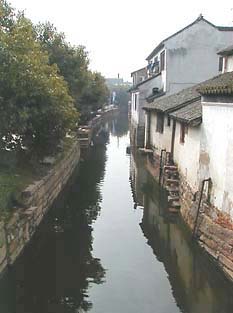| Travel in China > Cultural Sites > Towns |
|
|
Luzhi
Luzhi is gifted with favorable terrain and outstanding people. It faces the Wusong River to the north and the Chenghu Lake to the south, and borders on Kunshan City to the east, and Suzhou to the west. Today's Luzhi teems with lakes, rivers and bridges, luring numerous visitors with its beautiful scenery.
Luzhi has been reputed as A Land of Bridges for long. It is amazing to see so many famous small bridges span the 5.6-kilometer-long river course. In its prime it had 72.5 bridges, and now 41 remain extant. Large stone bridges with several arches, small stone bridges with only one arch, wide arch bridges, narrow flat-top bridges, sister bridges and so on. All theses bridges make Luzhi quite special as a town in watery regions.
The famous Baosheng Temple is located in the west of Luzhi. It is recorded that the temple was constructed in 503. Having a history of more than 1,480 years, it is an ancient temple in areas south of the lower reaches of the Yangtze River. With an area of over 100 mu (1 mu = 1/15 hectare), 5,000 rooms and 1,000 monks in its early days, the temple attracted a great number of worshippers and pilgrims. Today we can still see its large scale from the remains. Beside its large scale, the sculpture in the temple also is also known far and wide
The tomb of Mr. Fu Li is in the west yard of the temple, with the Douya Pond in front. The Qingfeng Pavilion stands in the center of the pond. There are also stone bridges and ginkgos of thousands of years old in the temple. |
||||
All rights reserved. Reproduction of text for non-commercial purposes is permitted provided that both the source and author are acknowledged and a notifying email is sent to us. |
||||
 |
